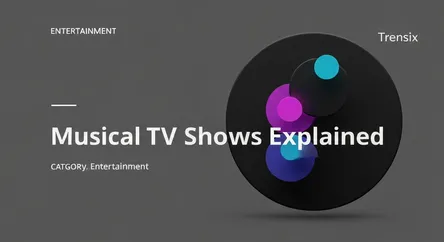Entertainment
Musical TV Shows Explained

Ever wonder why characters suddenly break into song? We explain the trend of musical TV shows and why they're hitting all the right notes with audiences.
What is it?
A musical TV show is a genre of television where characters express their emotions and advance the plot through integrated song and dance numbers. Unlike a standard drama with a background score, the musical performances are a core part of the narrative itself. This format borrows heavily from stage and film musicals, adapting the spectacle for an episodic structure. From comedies like Crazy Ex-Girlfriend to high school dramas like Glee, these shows use original songs or popular covers to explore character arcs and key story points in a uniquely expressive way.
Why is it trending?
The popularity of musical TV shows is surging due to streaming services seeking unique, high-engagement content. Shows like Disney+'s High School Musical: The Musical: The Series leverage nostalgia while creating new stars. The format's vibrant, often optimistic tone provides a form of escapism for viewers. Furthermore, the individual musical numbers are perfectly suited for social media, creating viral moments on platforms like TikTok and YouTube that act as powerful, organic marketing for the series, drawing in new audiences episode by episode.
How does it affect people?
Musical shows create a strong emotional connection, using music's universal language to heighten feelings of joy, love, or sorrow. They foster active fan communities who engage with the soundtrack long after the episode airs, sharing clips and creating content. This genre often celebrates self-expression and diversity, providing inspirational and relatable stories. For many, it serves as an accessible entry point to the broader world of musical theater, inspiring a new generation of fans and performers alike.